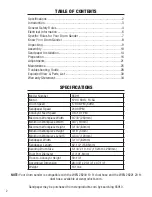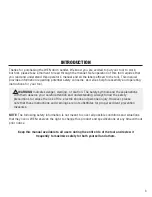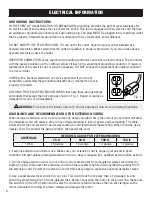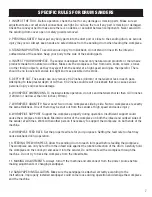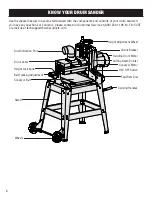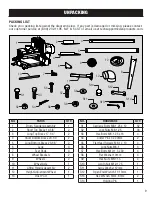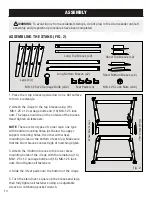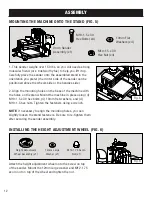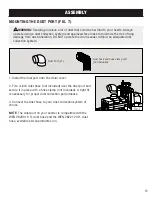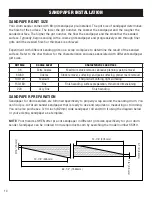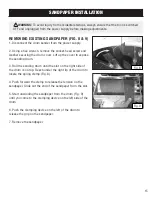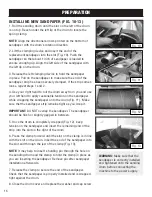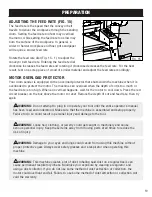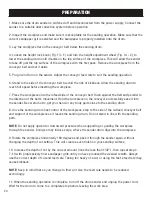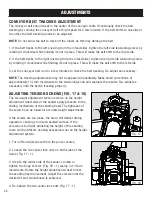
SPECIFIC RULES FOR DRUM SANDERS
1. INSPECT THE TOOL. Before operation, check the tool for any damage or missing parts. Make sure all
adjustments are correct and all connections are tight. Do not use the tool if any part is missing or damaged.
Check the conveyor belt to make sure there is no debris or sawdust between components. Never sand with
the sanding drum cover open or safety guards removed.
2. PERSONAL SAFETY. Never put any body parts into the dust port or close to the sanding drum, as serious
injury may occur. Always keep hands at a safe distance from the sanding drum when feeding the workpiece.
3. STANDING POSITION. To avoid serious injury from kickback, do not stand in line with the infeed or
outfeed sides of the sander. Keep your body to the side of the sanding path.
4. INSPECT YOUR WORKPIECE. The sander is designed to sand only natural wood products or man-made
products made from natural wood fiber. Make sure the workpiece is free from nails, knots, screws, stones
or other foreign objects, as they may eject from the sander at a high speed and injure the operator. There
should be no loose knots and as few tight knots as possible in the stock.
5. DEPTH OF CUT. The sander can only remove 1/32 inches (0.8mm) of materials or less in each pass.
Attempting to take greater depth of cut than 1/32 inches could result in kickback that can cause serious
personal injury and machine damage.
6. WORKPIECE DIMENSIONS. To maintain stable operation, do not sand materials shorter than 4-3/4 inches
(120mm) or narrower than 3/4 inches (19mm).
7. WORKPIECE QUANTITY. Never sand two or more workpieces side-by-side. No two workpieces are exactly
the same thickness. One of them may be shot out from the sander at high speed and cause injury.
8. WORKPEICE SUPPORT. Support the workpiece properly during operation. Insufficient support could
cause the workpiece to kick back. Maintain control of the workpiece on both the infeed and outfeed sides of
the sander at all times. Work with another person if necessary to support the workpiece on both ends of the
machine.
9. WORKPIECE FEED RATE. Set the proper feed rate for your purposes. Setting the feed rate too fast may
cause kickback during operation.
10. FEEDING THE WORKPIECE. Allow the sanding drum to reach full speed before feeding the workpiece.
The workpiece can only be fed from the infeed side against the rotation direction of the drum. Carefully hold
the workpiece on the conveyor and ease it into the sander. Do not force feed the workpiece through the
machine. Do not try to back the workpiece from the infeed table.
11. MAKING ADJUSTMENTS. Always turn off the machine and disconnect from the power source before
making adjustments or changing sandpaper.
12. SANDPAPER INSTALLATION. Make sure the sandpaper is attached correctly according to the
instructions. Improperly installed sandpaper could come loose during operation and damage the workpiece
and the machine.
7
Summary of Contents for 65911
Page 35: ...35 NOTES ...
Page 36: ...THANKS FOR REMEMBERING ...


